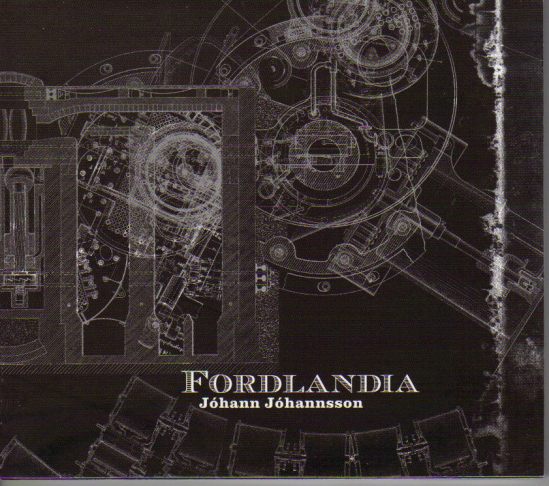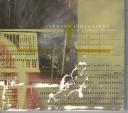It was the jazz age. The wild syncopated rhythms of the new music reflected the spirit of “can do” that gripped America. The horrors of the Great War were replaced by a world of infinite possibilities. Henry Ford’s invention of mass production meant that consumer items from cars downwards were affordable by almost everyone. The hope of the twenties collapsed around everyone’s ears after the crash of ’29, ushering in a decade of poverty, depression and, in Europe, fascism. Despite FDR’s best efforts with the Keynesian, quasi-socialism of the New Deal, it took another world war to rescue the American economy. And after six decades of unprecedented economic growth, the whole capitalist she-bang again looks in grave peril.
Jóhann Jóhannsson’s Fordlandia is the second of a projected trilogy inspired by the icons of twentieth century American capitalism. After the elegy to the early computer age that was IBM 1401, a User´s Manual, this suite seems inspired by the twenties era of hope, and its unravelling in the following decade. The inner sleeve juxtaposes an image of retro-futurist rocketry with a group of plantation workers standing next to their battered Ford, stuck in real and metaphorical mud. Fordlandia itself was a vast tract of land in Brazil bought by the Ford motor company in the twenties for the establishment of rubber plantations – the aim being to extend the principles of the production line right down to the sourcing of raw materials. It was an expensive folly. Workers rebelled against the appalling conditions they were expected to endure, and blight and disease were widespread. With the invention of synthetic alternatives to rubber, the bottom fell out of the market, and the land was sold at an enormous loss to the corporation.
The album’s epic title track is a sweeping, stately piece of nostalgic melancholia. Strings build at a funereal pace and the whole thing is pervaded by a sense of lost dreams. It’s a theme throughout the album. Doleful piano and glassy strings are underpinned, and sometimes undermined, by dark rumbling beats or drones bringing with them a feeling of foreboding. Even the quasi-religious pipe organ of “Chimaerica” is offset against a background of shattered strings. “The Great God Pan Is Dead” is a beautiful choral piece that sounds like a war requiem.
“Melodia” is preceded by four short prologue parts that crop up throughout the album. The track itself has a cyclical string part and an insistent throbbing bassline and beat. It builds gradually until it reaches a rattling, pulsing climax. “How We Left Fordlandia” is a magnificent piece of downbeat neo-romanticism that ebbs and flows before bowing out with the fading tones of a lonesome organist.
It’s always difficult to judge music’s long-term durability on a few listens. Fordlandia has a similar emotional depth and beauty to Górecki’s third symphony (although without the apocalyptic undertows). Full of spirits melancholy and eternity’s despair.
Tracks
1 Fordlandia 13:43
2 melodia (i) 1:56
3 The Rocket Builder (Lo Pan!) 6:25
4 melodia (ii) 1:49
5 Fordlandia – Aerial View 4:33
6 melodia (iii) 3:12
7 Chimaerica 3:23
8 melodia (iv) 2:45
9 The Great God Pan Is Dead 4:56
10 Melodia (Guidelines For A Propulsion Device Based On Heim’s Quantum Theory) 9:04
11 How We Left Fordlandia 15:25
Website
www.johannjohannsson.com



